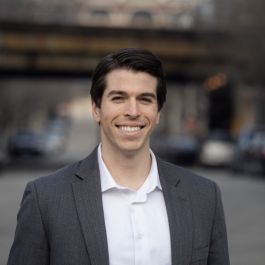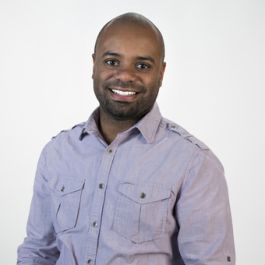Buildout faces significant challenges in 2021: scaling its 80-person team by 50 percent and developing five new strategic initiatives — on the heels of a pandemic.
Tackling a series of challenges can test the fabric of a business’s culture. But rather than coming apart at the seams, the people-first culture at the commercial real estate software provider has braced its teams for changes both expected and unforeseen.
“Last year, we realized that our culture wasn’t rooted in material things, but who we were as people and the behaviors and values that make up Buildout employees,” VP of People Dom Merritt said. “That helped us stay grounded and continue to be successful this past year.”
Like many companies, Buildout pivoted to remote work in the spring of 2020. A few months later, it signed an investment partnership with The Riverside Company that gave it the financial resources to kick off a formidable growth plan: hiring around 40 people, integrating the platform with a newly-acquired CRM software provider Rethink, and developing five new strategic initiatives to expand its market reach and add value for users.
The bottom line? 2021 is shaping up to be a banner year for the commercial real estate software company — and that’s largely due to the organization’s intentional culture.
Senior Operations Manager John Busch said around the company’s origin in 2010, Buildout’s founders devised cultural behaviors and values they wanted employees to embody, and the most important one was that team members should prioritize one another.
Busch said this people-first mentality empowers the team to collaborate and adapt to change.
“Everyone is supportive because the culture is built that way,” Busch said. “So the work around scaling is easier and this mentality will always be important for Buildout.”
Transparency is another key value.
According to Product Manager Kellie Mason, leaders get vulnerable with the team and continue to share their insights on big decisions around remote work and scaling. And to further distance themselves from the notion that leaders simply give marching orders to the team, they let individual contributors have a voice. For instance, Mason, a ground-level employee, said she delivered the company-wide message around Rethink’s acquisition to drive further team engagement around the news.
Hear more from three Buildout professionals as they share how a top-notch company culture and talented team are fueling the company’s scale this year and beyond.

What are some of Buildout’s major scaling plans?
Busch: Before 2021, we were essentially a two-product company. We’re doing well in our market, but we took a step back and asked where we want to be in 2025. So this year, we kicked off a strategic initiative program to have five major focus areas.
To get there, we acquired Rethink and we’re also becoming a data provider, which is an evolution of our business model. We need to scale our operations and that means hiring 40 people. We’re also updating all of our software systems and moving to enterprise resource planning (ERP).
Mason: We have a variety of new products coming out, like our financial modeling tool and Premium Listings, our improved marketing experience. We’re improving our CRM with Rethink’s integration and evolving our core marketing product as well.

How did those plans get impacted by the pandemic, and how did the team push through?
Merritt: We had to adjust to the remote world and decide what to do with all the people we planned to hire. Then we got acquired as a business before acquiring another company, and each move came with a different kind of scale Buildout hadn’t seen before.
With all that change in a very short period of time, we had to reinvent ourselves around who we are, what was most important to us and why those things mattered. Having a clear definition of who we are sustained us and allowed us to evolve our product the way we would have if COVID-19 wasn’t a factor.
Having a clear definition of who we are sustained us.”
What elements of Buildout’s culture helped the team stay engaged throughout such drastic change?
Merritt: A principle in our culture code is information transparency. From the leadership perspective, it’s difficult to be transparent when you don’t have all the answers but you’re still trying to provide meaning so people can stay engaged. But our team has been gracious. They accepted that things would change and they appreciated our transparency, which has helped us navigate this past year.
We allow ourselves to be vulnerable and the company can ask leadership any question. Sometimes we have answers and other times we’re caught off guard. But good leaders allow themselves to be vulnerable. When employees see that, they can be vulnerable too.
Mason: We are great about sharing things early and gathering feedback, so I always feel like I’m seen and heard. I shared messages to the company around our Rethink acquisition, which was daunting since I’m not in leadership but it came from an honest place because I believed in what we were doing. I shared my personal excitement and vision for this new journey and it put people at ease because it wasn’t just leadership telling us that we have to pivot.
How has the team adapted and iterated its way through the last year?
Busch: We know we don’t have all the answers. But you don’t know what the right move is until you try something out. So we’re always open to adapting.
For example, we started with 15 strategic initiatives at the beginning of the year but that is an outrageous number of things to work on. So we assessed the landscape and decided which of the 15 we should evolve and which ones we should put on hold until 2022. Then we came up with five main focus areas for the rest of the year and communicated them to the company.
We know we don’t have all the answers. But you don’t know what the right move is until you try something out.”
Mason: We are working on a big project to unbundle and repackage our products with a new pricing strategy. That came out of a conversation I had with the marketing team about all our technical dependencies. We decided to examine all our problems around these dependencies and we came together as a company and said, “We’re going to pause our other projects for now and build a better customer experience with better pricing.” That initiative was something that came out of nothing.

What’s the glue that held the team together through all the change of the last year?
Mason: For me, it’s the team and the people. No matter who I’m reaching out to for assistance, I can get an answer almost immediately. We have great leadership and without them, I don’t know if we would have been so successful this past year.
Busch: If we were the same size and offering the same products for the next 10 years, I don’t think our employees would be as motivated in their daily work. So our scale and the impact we’re making on our industry has energized me and the rest of the team.
Merritt: This past year, we realized the importance of staying connected and maintaining our relationships. We have been saying, “Buildout exists for the people that it’s made of,” and that’s because we truly put our colleagues above everything else. Our team is why we’ve been successful to this point.










